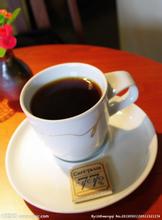Introduction to the Flavor of the growing Environment of Fine Coffee beans in Aldumara, Mexico
Tejada was re-elected in 1876, defeating Diaz (Diaz). In 1876, Diaz rebelled against the government and announced plans to overthrow Tejada as president. After Diaz overthrew the original government, Tejada fled the country and Diaz became the new president. This led to more than three decades of dictatorship (1876-1911), a period of relative prosperity and peace, and a great improvement in the country's infrastructure, thanks to foreign investment.
Contemporary era
After a long dictatorship of Porfirio Diaz, the Mexican Revolution finally broke out in 1910. The revolutionary forces defeated the Union army, but infighting broke out, plunging Mexico into civil war for two decades. After the revolution, the Institutional Revolutionary Party of Mexico (Partido Revolucionario Institucional,PRI) came to power and ruled Mexico until the end of the 20th century, when the first party rotation was achieved in 2000.
On 2 July 2006, voting began in Mexico's presidential and parliamentary elections. On September 5, the Federal Election Court of Mexico officially announced that Felipe Calderon Hinojosa, the presidential candidate of the Mexican National Action Party, won the presidential election and was elected the new president of Mexico.
Enrique Pena Nieto, presidential candidate of the opposition Institutional Revolutionary Party, took part in the presidential election on July 1, 2012. The core of his campaign platform is "change"-opening up the oil industry monopolized by Pemex to foreign countries, raising taxes and reforming the labor market, coupled with his young and handsome image. His popularity has been ahead of the other three presidential candidates. Finally, the presidential election was won with 38.21% of the vote, the second peaceful rotation of political parties was realized, and the Institutional Revolutionary Party (PRI) was in power again after 12 years in the wild.
Administrative division editor
Main division
The capital of Mexico is Mexico City. The country is divided into 31 states and one federal district (the capital Mexico City). There are towns and villages under the state and districts under the Federal District. The states have their own constitutions and legislatures, and the states exercise autonomy. The governor shall be directly elected by the residents of the state for a term of six years and shall not be re-elected. Since 1997, the chief executive of the Federal District has been directly elected by the citizens of the capital.
The selection of Mexican coffee is generally carried out manually. The main basis for selection is according to the fullness of coffee particles, whether it is uniform, and then grade it. Generally speaking, coffee with full and uniform grains is easier to preserve. Only the fullest and most evenly grained coffee beans can be roasted to represent the best and best coffee in the country.
After the workers picked the coffee beans, they spread the coffee beans in a special house with ventilation on all sides. About a week later, the coffee beans were packed in loosely packed bags so that the wind could blow through the bags. After about seven weeks, the coffee beans changed color and taste. Finally, these coffee beans are selected manually, and the coffee beans of high quality are selected and officially bagged for preservation.
Aldura coffee beans are Mexico's top coffee beans, this coffee bean is large, with a strong sweet, sour and good aroma Mexicans are enthusiastic and optimistic, which is perfectly reflected by the chocolate in Mexican coffee. There are different methods of Mexican coffee, but the main difference is whether it contains alcohol or not. let's first introduce the practice of non-alcohol.
Heat a cup of milk, a teaspoon of cinnamon powder and a teaspoon of vanilla powder in a pot. Keep it at medium temperature. The heat is not too high. The milk must not boil. Then add the cocoa powder, fully dissolve and stir well. If you are particularly fond of chocolate, you can use chocolate paste instead of cocoa powder and milk.
Let the milk dry for about 5 minutes, wait until the milk is slightly cool, then pour it into the prepared coffee, decorate the coffee surface with cold cream, then decorate with a piece of cinnamon, and the Mexican coffee is ready.

Important Notice :
前街咖啡 FrontStreet Coffee has moved to new addredd:
FrontStreet Coffee Address: 315,Donghua East Road,GuangZhou
Tel:020 38364473
- Prev

Faintly fruity Dominica Santo Domingo Coffee Flavor Manor
At the beginning of the 17th century, when French, Dutch and British pirates were operating in the west of Hispaniola, France began to allow farmers and merchants to gradually colonize the western part of the Spanish island, which was blocked by mountains on the island. It didn't attract the attention of the Spaniards in the east. [3] in 1677, about 4,000 French lived in 11 villages in the west of the island. In 1697, France and
- Next

Introduction to the characteristics of Panamanian Kasha Coffee Flavor Manor
In May 2014, the Panamanian government held a new presidential conference.
Related
- Detailed explanation of Jadeite planting Land in Panamanian Jadeite Manor introduction to the grading system of Jadeite competitive bidding, Red bid, Green bid and Rose Summer
- Story of Coffee planting in Brenka region of Costa Rica Stonehenge Manor anaerobic heavy honey treatment of flavor mouth
- What's on the barrel of Blue Mountain Coffee beans?
- Can American coffee also pull flowers? How to use hot American style to pull out a good-looking pattern?
- Can you make a cold extract with coffee beans? What is the right proportion for cold-extracted coffee formula?
- Indonesian PWN Gold Mandrine Coffee Origin Features Flavor How to Chong? Mandolin coffee is American.
- A brief introduction to the flavor characteristics of Brazilian yellow bourbon coffee beans
- What is the effect of different water quality on the flavor of cold-extracted coffee? What kind of water is best for brewing coffee?
- Why do you think of Rose Summer whenever you mention Panamanian coffee?
- Introduction to the characteristics of authentic blue mountain coffee bean producing areas? What is the CIB Coffee Authority in Jamaica?

